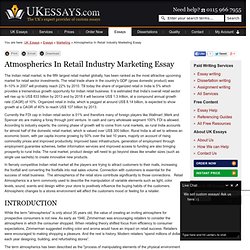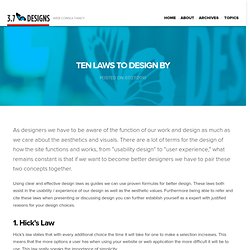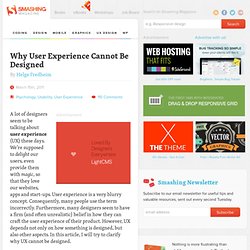

Evolution of retail industry. Atmospherics In Retail Industry Marketing Essay. The Indian retail market, is the fifth largest retail market globally, has been ranked as the most attractive upcoming market for retail sector investments.

The retail trade share in the country's GDP (gross domestic product) was 8–10% in 2007 will probably reach 22% by 2010. Till today the share of organized retail in India is 5% which provides a tremendous growth opportunity for Indian retail business. It is estimated that India's overall retail sector will rise up to US$ 833 billion by 2013 and by 2018 it will become US$ 1.3 trillion, at a compound annual growth rate (CAGR) of 10%. Organized retail in India, which is pegged at around US$ 8.14 billion, is expected to show growth at a CAGR of 40% to reach US$ 107 billion by 2013. Currently the FDI cap in Indian retail sector is 51% and therefore many of foreign players like Wallmart ,Merk and Spencer etc are making a foray through joint venture. Introduction: In this stage, the product is launched into the market. Ten Laws to Design By. As designers we have to be aware of the function of our work and design as much as we care about the aesthetics and visuals.

There are a lot of terms for the design of how the site functions and works, from “usability design” to “user experience,” what remains constant is that if we want to become better designers we have to pair these two concepts together. Using clear and effective design laws as guides we can use proven formulas for better design. These laws both assist in the usability / experience of our design as well as the aesthetic values. Furthermore being able to refer and cite these laws when presenting or discussing design you can further establish yourself as a expert with justified reasons for your design choices. 1. Hick’s law states that with every additional choice the time it will take for one to make a selection increases. The classic case study for Hick’s law involves a grocery store which put out free jam tasting for customers. Why User Experience Cannot Be Designed. Advertisement A lot of designers seem to be talking about user experience (UX) these days.

We’re supposed to delight our users, even provide them with magic, so that they love our websites, apps and start-ups. User experience is a very blurry concept. Consequently, many people use the term incorrectly. Furthermore, many designers seem to have a firm (and often unrealistic) belief in how they can craft the user experience of their product. Heterogeneous Interpretations of UX I recently visited the elegant website of a design agency. The perception might not be representative of our industry, but it illustrates that UX is perceived in different ways and that it is sometimes used as a buzzword for usability (for more, see Hans-Christian Jetter and Jens Gerken’s article “A simplified model of user experience for practical application1”). Www.ijdesign.org/ojs/index.php/IJDesign/article/viewFile/1156/470. The Evolving Retail Experience. InShare10 Traditional media treats the consumer like a spectator.

But consumers now expect more. As the slow growth of the economy continues, U.S. consumer spending - particularly full-price retail spending - has continued to lag. But retailers are, slowly but surely, making a comeback. And it's the perfect time to reshape the consumer shopping experience, to redefine and improve it, both in the store and out. The New Rules of Commerce Out with the old, and in with the new. Seamless multi-channel: A shopper's experience is no longer linear (i.e., view an ad, visit the store, compare options, make a purchase). The power of touch: New technology like touch screens, interactive displays, digital signage, and mobile devices are changing the way consumers shop.
Technology enabled: From QR codes to RFID (radio frequency identification) tags, there has been a quick integration of new technologies in the retail space to build personalized experiences.